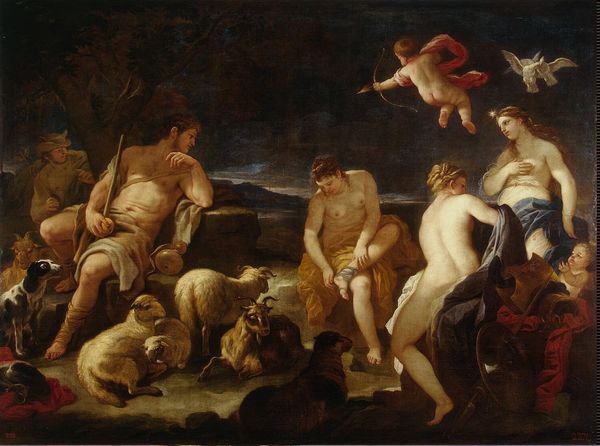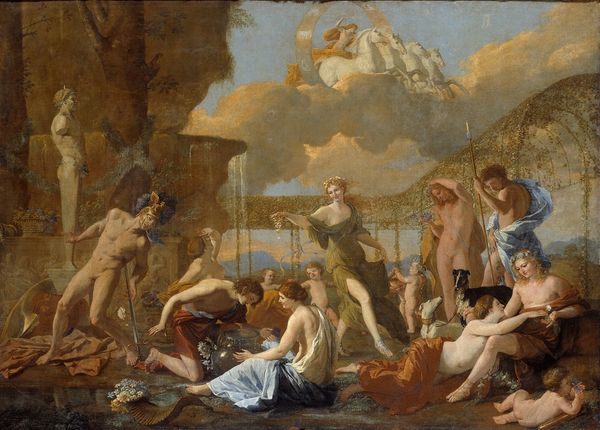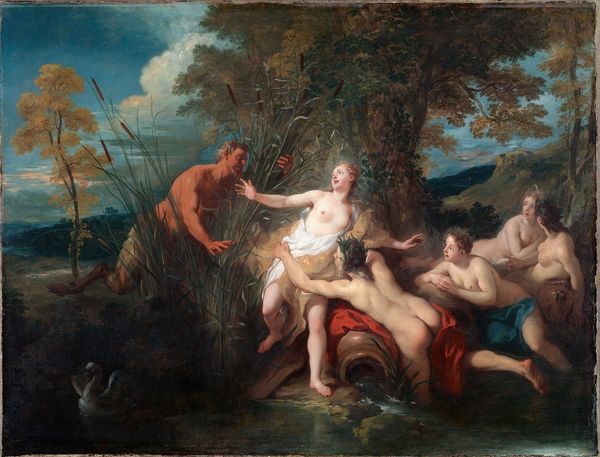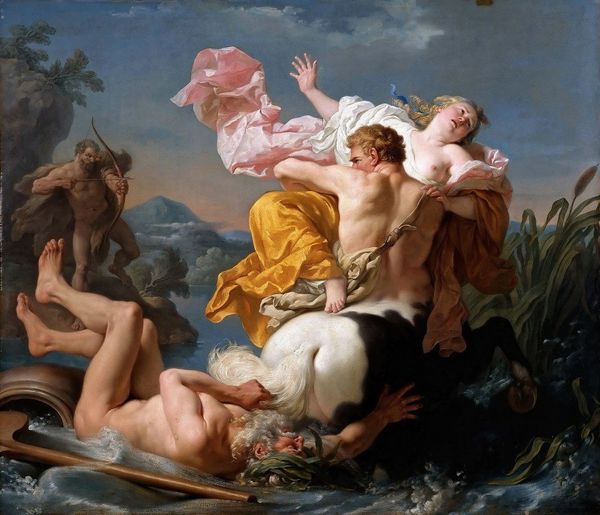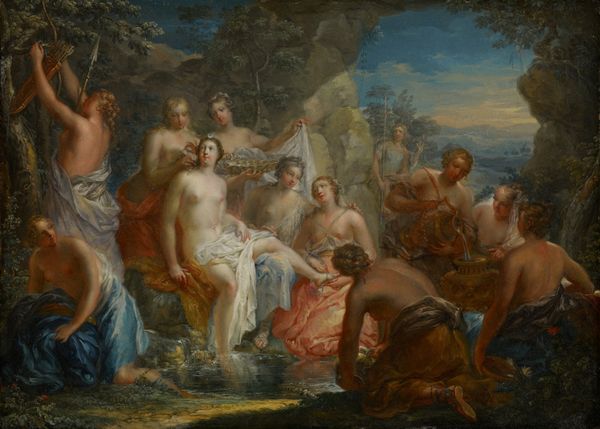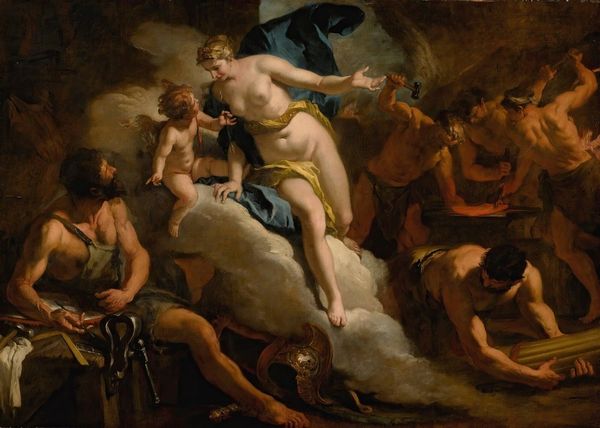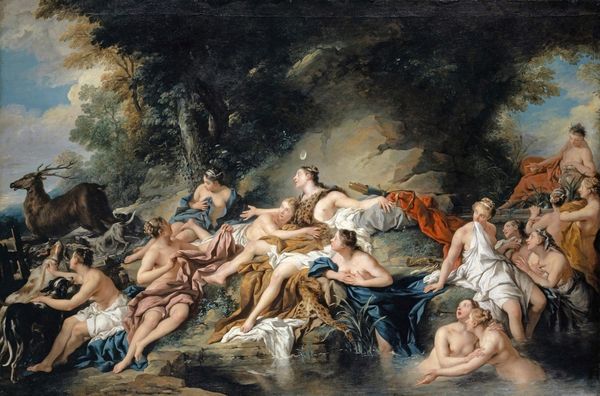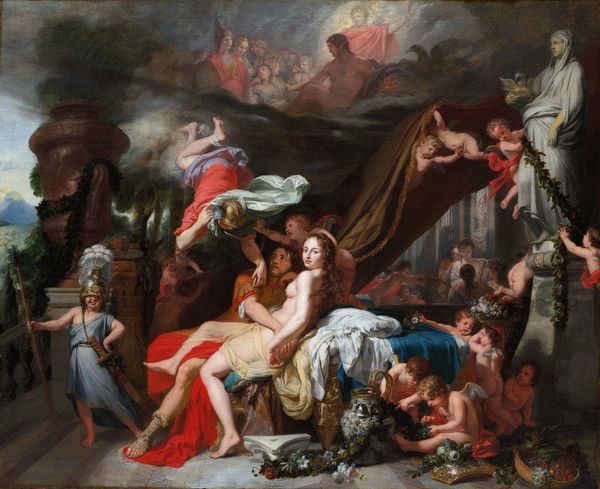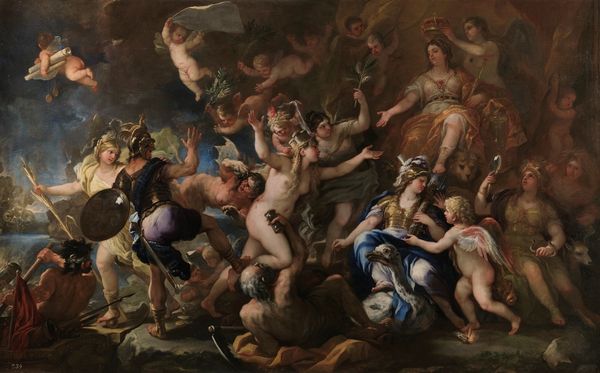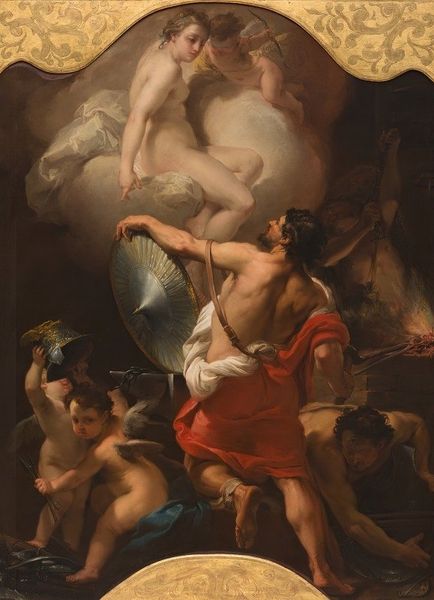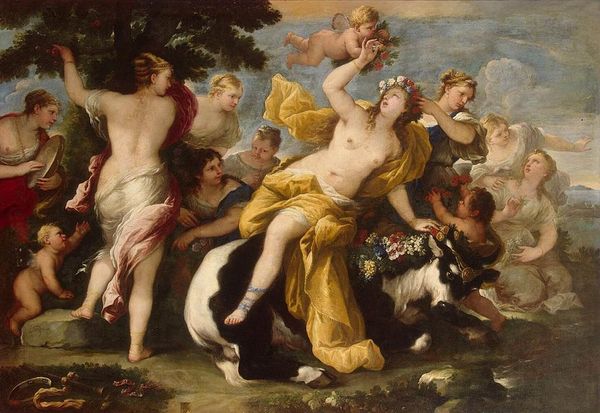
painting
#
baroque
#
painting
#
figuration
#
mythology
#
history-painting
Copyright: Public Domain: Artvee
Gaetano Gandolfi painted "Diana’s judgement of the nymph Callisto" in Italy in the late 18th century. It reflects the visual culture of its time, one in which artists were concerned with power, narrative, and the body. The painting shows a moment of judgement. Diana has discovered that Callisto, one of her nymph attendants, is pregnant, and she is cast out. But this is more than just a story about individual misbehavior. It’s also about the institutions that impose order on human life, like marriage. In Gandolfi’s Italy, the Church had a great influence on social norms, and determined the limits of acceptable female behavior. Note that while Diana remains demurely covered, Callisto and her fellow nymphs are nude. The painting suggests a moral tension between divine law and female desire, and perhaps a desire to overturn the existing cultural norms. The historian uses sources from social and cultural history to understand such contexts. By considering how the painting intersects with ideas about gender, power, and religion in 18th-century Italy, we can better understand its significance.
Comments
No comments
Be the first to comment and join the conversation on the ultimate creative platform.
